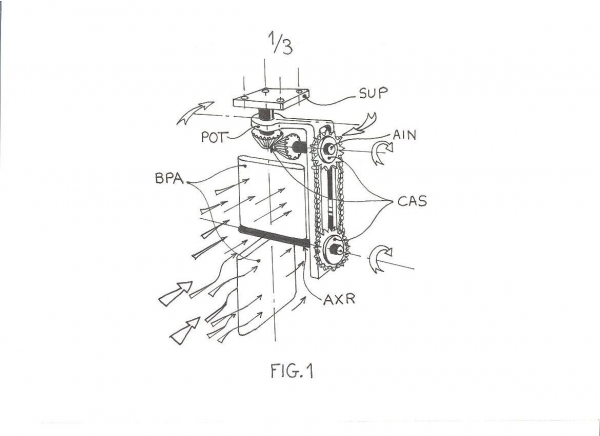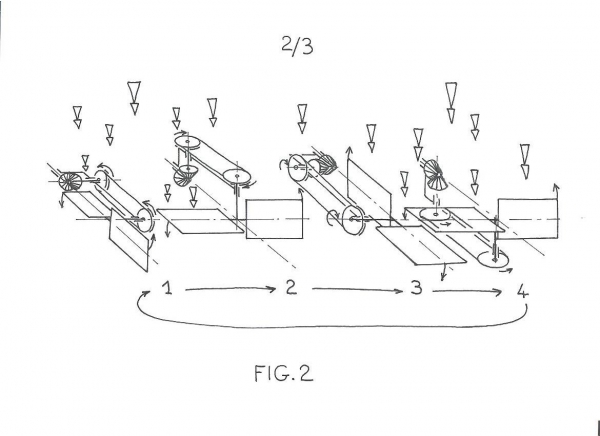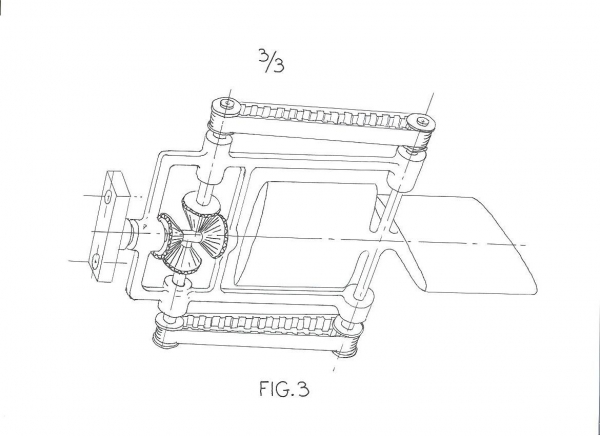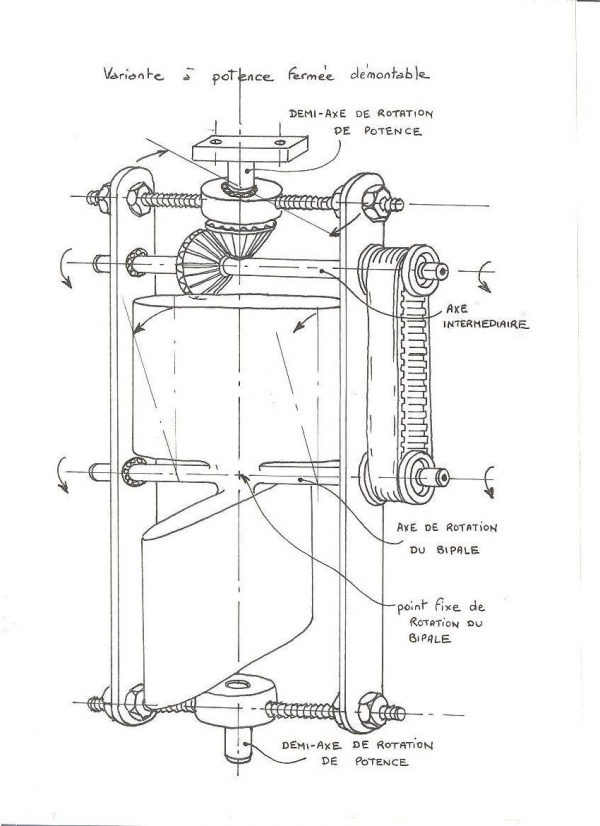Pascal HA PHAM wrote:
THE VOILA TURBINE ROBIPLAN:
A recreation for one of the little sister of TRILO:
text of the patent specification:
TECHNICAL FIELD OF THE INVENTION:
The present invention is a significant evolution of the concept of the wind turbine.
A wind turbine uses wind energy through a moving assembly powered by natural air currents, this assembly consists of at least two identical and balanced blades mounted on an axis of rotation located "end to the wind", it is the incidence of these blades in the form of a helix that causes the rotation. The axis of rotation is generally fixed and located in a horizontal position relative to the ground and is perpendicular to the plane of rotation of the propeller. The optimum power is obtained by adjusting the settings of 2 major parameters: the incidence of the blades and the orientation of the moving assembly vis-à-vis the direction of the wind.
GENERAL DESCRIPTION OF THE INVENTION:
Unlike wind and all other existing machines fed by natural flows, mobile to elementary streams dual level of nested rotations comes alive in two simultaneous rotations: rotation of a two-bladed paddles -Couple - (BPA) in a first generic plane perpendicular to its axis of rotation (AXR), and the rotation of the rotation axis of the two-bladed in a second generic plane perpendicular to the first (fig 1 and 2). The rotation of the two-axis axis (BPA) is made around its point of intersection with the generic plane of rotation of the pair of blades (fig 2 and 3). During its revolution, the axis of the bipales turns on itself carried and guided by a gallows (POT). The 2 blades constituting the bipales are orthogonal to each other and fixed symmetrically on each side on their axis of rotation. These blades are not in the form of a helix but cut into a preferably constant section profile with two symmetrical leading edges, the blades can also be perfectly flat. Thus, the rotations of the bipales are carried out along an axis whose position varies constantly during the rotary cycle of the stem, alternately having the wind one face and one leading edge, then the other face and the other leading edge, it for one then the other blades whose plans are always angularly offset 90 ° (one relative to the other). The two nested rotations are realized by a cascade of parts, gears, chain and conical couple (CAS) ensuring the kinematics of the relative displacements required simultaneously. It is the rotation of the blades that drives the rotation of the axis of the two-bladed - on itself - via the gallows and the cascade of cinematic parts. One of the pinions of the conical couple is fixed / secured to the support of the assembly. This new arrangement allows an operation ensuring a cycle of alternating passages of each blade from the two-blade to the wind, then through the wind, every quarter cycle, and vice versa. Each blade regularly passes from a zero incidence to a maximum incidence (orthogonal to the flow) in its phase of engagement with the wind, then from a maximum incidence to a zero incidence in its phase of release of the wind (fig 1).
DEFINITION OF CONSTITUENT PIECES:
Bipal definition (BPA):
It is a monolithic assembly of two identical blades fixed in a balanced manner on either side of an axis of rotation, the surfaces of the blades constituting the two-bladed 2 (BPA) are orthogonal relative to each other and symmetrically fixed on each side on their axis of rotation (AXR) Definition of the axis of rotation of the two-blade (AXR):
It is the axis that supports and guides in rotation the two-bladed, it also receives the first drive gear of the kinematic cascade and is supported by a bracket.
Definition of the stem (POT):
This is the rotating support ensuring the second nested rotation of the machine.
It is controlled by the rotation of the two-blade via the kinematic cascade sprocket / chain / tapered torque. It can take a simplified form single arm "L" inverted, or stronger "U" inverted if the power to transmit is important. It must be both resistant and sufficiently perforated / profiled not to oppose too much resistance to the vein of the elementary flow that feeds the machine (fig 2 and 3).




